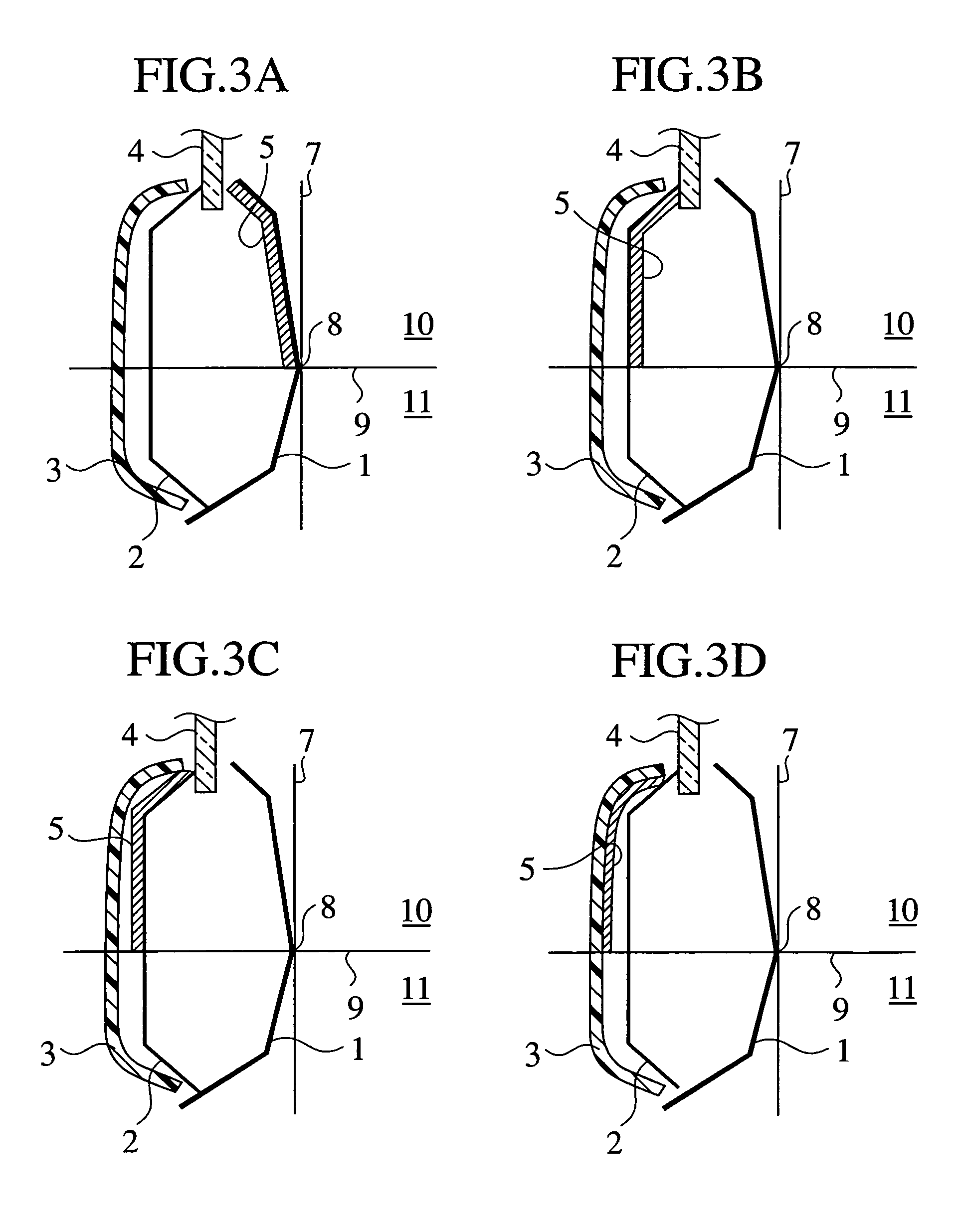Vehicle body panel structure
a technology for vehicle body panels and body panels, applied in the direction of roofs, doors, transportation and packaging, etc., can solve the problems of no conventional art, technology works against the case, etc., and achieve the effects of preventing heat penetration, low emissivity, and preventing heat intrusion
- Summary
- Abstract
- Description
- Claims
- Application Information
AI Technical Summary
Benefits of technology
Problems solved by technology
Method used
Image
Examples
example 1
[0083]In Example 1, the upper half (15 cm high×30 cm wide) of the surface of the panel 17 facing the panel 19 was set as the heat insulation section. As a heat insulation method, a 12 μm thick PET film (UNITIKA LTD., product name: EMBLET, model number: MP12) having a surface with aluminum deposited was attached to this heat insulation section with an epoxy resin adhesive. The emissivity of the attached film was 0.05, and the thickness of the adhesive layer was 15 μm.
[0084]The lower half (15 cm high×30 cm wide) of the surface of the panel 17 facing the panel 19 was set as the heat dissipation section. In the heat dissipation method, the heat dissipation section was not subjected to the heat insulation treatment. Specifically, in Example 1, as the heat dissipation method, the 12 μm thick PET film having a surface deposited with aluminum was not attached on the lower half.
[0085]Also in the following Examples 2 to 12, as the heat dissipation method, the heat insulation treatment was onl...
example 2
[0086]In Example 2, instead of the 12 μm thick PET film of Example 1 having a surface with aluminum deposited, 5 μm thick aluminum foil was used. The emissivity of the attached Al foil was 0.05. Example 2 was the same as Example 1 except that Al foil was attached.
example 3
[0087]In Example 3, instead of the 12 μm thick PET film of Example 1 having a surface deposited with aluminum, a film was used which was obtained by the following way. Aluminum pigment (TOYO ALUMINUM K.K., leafing aluminum paste) of 10 parts by weight, oil-free polyester resin varnish (DAINIPPON INK AND CHEMICALS INCOROPRATION, solid content: 60%) of 5 parts by weight, and polyisocyanate resin (NIPPON POLYURETHANE INDUSTRY CO. LTD., solid content: 70%) of one part by weight were mixed and dispersed, and then diluted by a solvent for adjustment of viscosity. The resultant mixture was sprayed on a 25 μm thick PET film (UNITIKA LTD., product name: EMBLET, model number: S25) in order to obtain a uniform dry film thickness of 20 μm. The emissivity of this paint film was 0.10, and the thickness of the adhesive layer was 15 μm. Example 3 was the same as Example 1 except that the film coated by Al containing coating material was attached.
PUM
 Login to View More
Login to View More Abstract
Description
Claims
Application Information
 Login to View More
Login to View More - R&D
- Intellectual Property
- Life Sciences
- Materials
- Tech Scout
- Unparalleled Data Quality
- Higher Quality Content
- 60% Fewer Hallucinations
Browse by: Latest US Patents, China's latest patents, Technical Efficacy Thesaurus, Application Domain, Technology Topic, Popular Technical Reports.
© 2025 PatSnap. All rights reserved.Legal|Privacy policy|Modern Slavery Act Transparency Statement|Sitemap|About US| Contact US: help@patsnap.com



